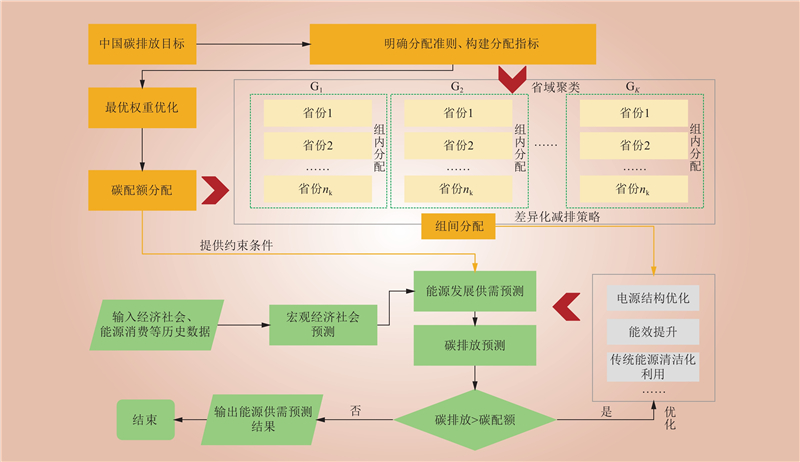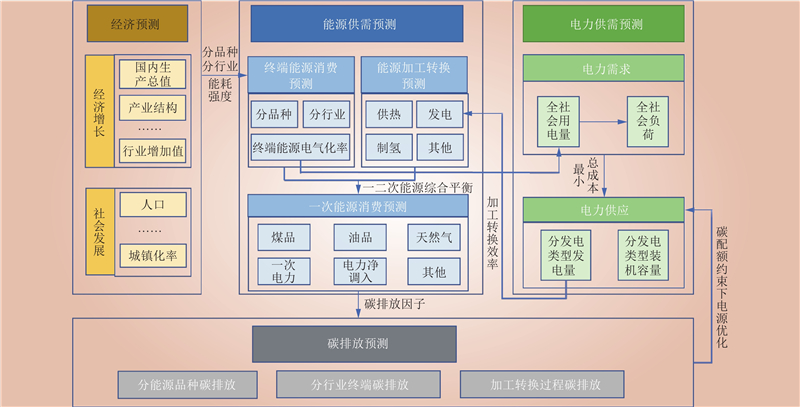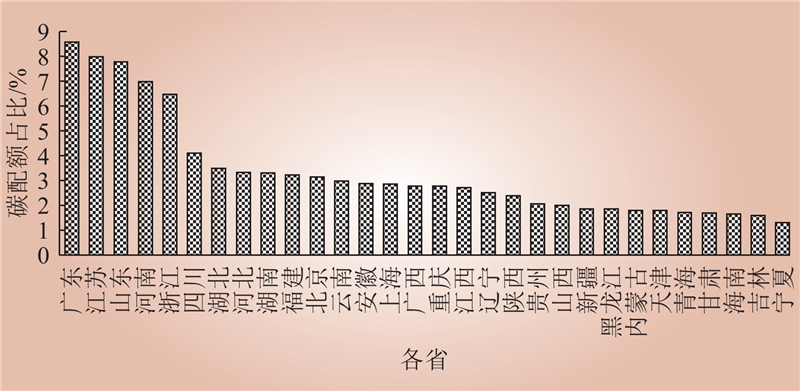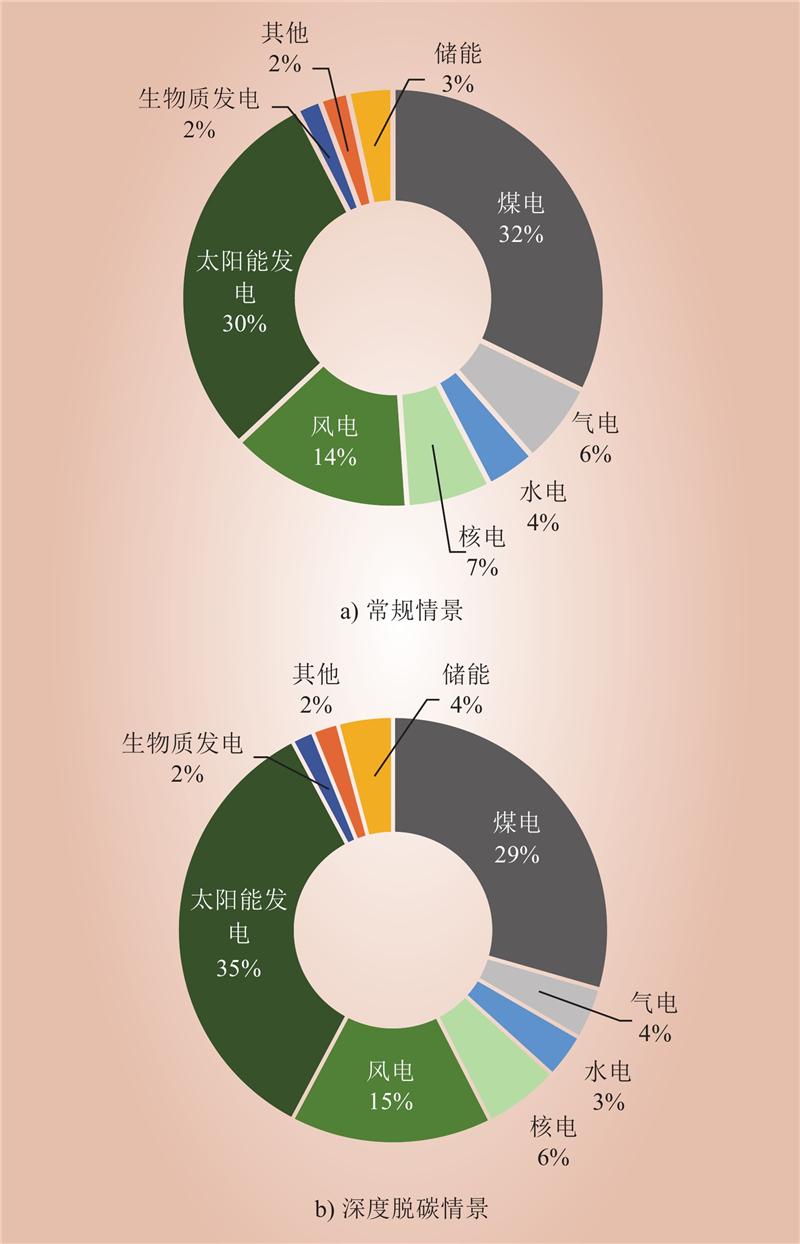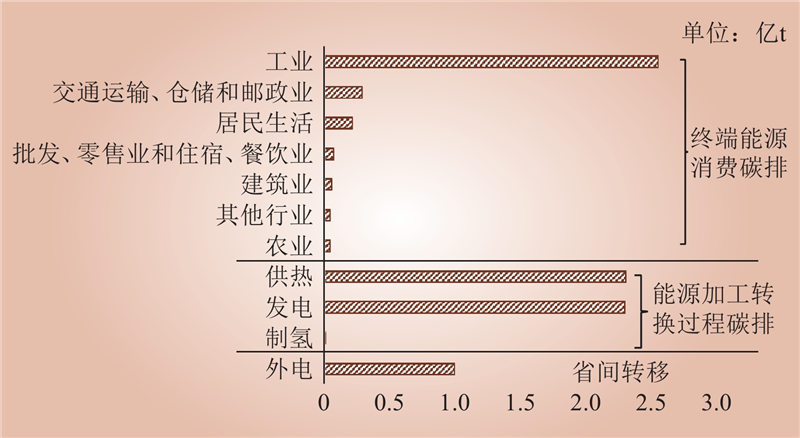| 1 |
李茂林, 李宁宁, 宋雯馨. 基于人口与经济组合模型的区域能源消费预测[J]. 中国市场, 2024, (3): 12- 15.
|
| 2 |
陈晖, 蔡宇涵, 谢伦裕. 区域能源消费总量与结构的预测方法研究: 基于广东省相关数据的分析[J]. 价格理论与实践, 2020, (5): 161- 164, 176.
|
|
CHEN Hui, CAI Yuhan, XIE Lunyu. Prediction of regional energy consumption and structure: take Guangdong Province as an example[J]. Price (Theory & Practice), 2020, (5): 161- 164, 176.
|
| 3 |
李国柱, 黄巧慧. 基于Lasso-GRNN神经网络模型的京津冀碳达峰情景预测[J]. 环境科学, 2025, 46 (2): 636- 646.
|
|
LI Guozhu, HUANG Qiaohui. Prediction of carbon peak in Beijing-Tianjin-Hebei Region based on lasso-GRNN neural network model[J]. Environmental Science, 2025, 46 (2): 636- 646.
|
| 4 |
黄和平, 李紫霞, 黄靛, 等. “双碳” 目标下江西省农业碳排放量测算、影响因素分析与预测研究[J]. 生态与农村环境学报, 2024, 40 (2): 179- 190.
|
|
HUANG Heping, LI Zixia, HUANG Dian, et al. Research on the measurement, analysis and prediction of agricultural carbon emissions in Jiangxi Province under the "dual carbon" goals[J]. Journal of Ecology and Rural Environment, 2024, 40 (2): 179- 190.
|
| 5 |
王春春. 基于指数分解与LEAP模型的福建省能源需求及CO2排放预测研究[D]. 南京: 南京大学, 2019.
|
|
WANG Chunchun. Forecast of Fujian energy demand and CO2 emission based on index decomposition and LEAP model[D]. Nanjing: Nanjing University, 2019.
|
| 6 |
潘栋, 李楠, 李锋, 等. 基于能源碳排放预测的中国东部地区达峰策略制定[J]. 环境科学学报, 2021, 41 (3): 1142- 1152.
|
|
PAN Dong, LI Nan, LI Feng, et al. Mitigation strategy of Eastern China based on energy-source carbon emission estimation[J]. Acta Scientiae Circumstantiae, 2021, 41 (3): 1142- 1152.
|
| 7 |
王宏伟, 刘一晗, 张芸栗, 等. 辽宁省公共机构能源供应结构优化设计[J]. 沈阳建筑大学学报(自然科学版), 2020, 36 (6): 1106- 1112.
|
|
WANG Hongwei, LIU Yihan, ZHANG Yunli, et al. Optimization design of energy supply structure for public building in Liaoning Province[J]. Journal of Shenyang Jianzhu University (Natural Science), 2020, 36 (6): 1106- 1112.
|
| 8 |
方恺, 李帅, 叶瑞克, 等. 全球气候治理新进展: 区域碳排放权分配研究综述[J]. 生态学报, 2020, 40 (1): 10- 23.
|
|
FANG Kai, LI Shuai, YE Ruike, et al. New progress in global climate governance: a review on the allocation of regional carbon emission allowance[J]. Acta Ecologica Sinica, 2020, 40 (1): 10- 23.
|
| 9 |
王洁方, 魏佳丽, 郭清娥, 等. 碳达峰目标下我国省域碳配额的竞争性分组配置方法研究[J]. 管理评论, 2023, 35 (11): 36- 44.
|
|
WANG Jiefang, WEI Jiali, Guo Qinge, et al. Study on competitive grouping allocation of China's provincial carbon quota under the goal of carbon peak[J]. Management Review, 2023, 35 (11): 36- 44.
|
| 10 |
罗必雄, 张毅, 张力, 等. 能源领域碳系统结构优化和碳排放预测方法与实例验证[J]. 煤炭学报, 2023, 48 (7): 2657- 2667.
|
|
LUO Bixiong, ZHANG Yi, ZHANG Li, et al. Carbon system structure optimization and carbon emission prediction method and case verification in energy field[J]. Journal of China Coal Society, 2023, 48 (7): 2657- 2667.
|
| 11 |
QIN Q D, LIU Y, LI X, et al. A multi-criteria decision analysis model for carbon emission quota allocation in China's east coastal areas: Efficiency and equity[J]. Journal of Cleaner Production, 2017, 168, 410- 419.
DOI
|
| 12 |
谭显春, 程永龙, 顾佰和. 中国碳总量控制新进展: 省域碳配额分配研究综述[J]. 气候变化研究进展, 2023, 19 (1): 63- 73.
|
|
TAN Xianchun, CHENG Yonglong, GU Baihe. New progress in controlling the total volume of carbon emissions in China: a review on the allocation of provincial carbon emission allowances[J]. Climate Change Research, 2023, 19 (1): 63- 73.
|
| 13 |
张岩. 基于RC-DEA模型的省际碳排放边际减排成本研究[D]. 北京: 华北电力大学, 2018.
|
|
ZHANG Yan. Research on marginal abatement costs of carbon emissions of Chinese region based on the RC-DEA model[D]. Beijing: North China Electric Power University, 2018.
|
| 14 |
孙耀华, 何爱平, 彭硕毅, 等. 碳强度减排指标约束下碳排放权的省际分配效率研究[J]. 统计与信息论坛, 2019, 34 (6): 74- 81.
DOI
|
|
SUN Yaohua, HE Aiping, PENG Shuoyi, et al. Study on provincial distribution efficiency of carbon emissions right under the constraint of carbon intensity target[J]. Statistics & Information Forum, 2019, 34 (6): 74- 81.
DOI
|
| 15 |
王勇, 程瑜, 杨光春, 等. 2020和2030年碳强度目标约束下中国碳排放权的省区分解[J]. 中国环境科学, 2018, 38 (8): 3180- 3188.
DOI
|
|
WANG Yong, CHENG Yu, YANG Guangchun, et al. Provincial decomposition of China's carbon emission rights under the constraint of 2020 and 2030 carbon intensity targets[J]. China Environmental Science, 2018, 38 (8): 3180- 3188.
DOI
|
| 16 |
许文芳. 能源与碳排放总量约束下省域碳排放权分配策略研究[D]. 南京: 南京邮电大学, 2023.
|
|
XU Wenfang. Research on provincial carbon emission right allocation strategy under the constraints of energy and carbon emissions[D]. Nanjing: Nanjing University of Posts and Telecommunications, 2023.
|
| 17 |
黄震, 谢晓敏, 张庭婷. “双碳” 背景下我国中长期能源需求预测与转型路径研究[J]. 中国工程科学, 2022, 24 (6): 8- 18.
DOI
|
|
HUANG Zhen, XIE Xiaomin, ZHANG Tingting. Medium-and long-term energy demand of China and energy transition pathway toward carbon neutrality[J]. Strategic Study of CAE, 2022, 24 (6): 8- 18.
DOI
|
| 18 |
张运洲, 鲁刚, 王芃, 等. 能源安全新战略下能源清洁化率和终端电气化率提升路径分析[J]. 中国电力, 2020, 53 (2): 1- 8.
|
|
ZHANG Yunzhou, LU Gang, WANG Peng, et al. Analysis on the improvement path of non-fossil energy consumption proportion and terminal electrification rate under the new energy security strategy[J]. Electric Power, 2020, 53 (2): 1- 8.
|
| 19 |
代红才, 张运洲, 李苏秀, 等. 中国能源高质量发展内涵与路径研究[J]. 中国电力, 2019, 52 (6): 27- 36.
|
|
DAI Hongcai, ZHANG Yunzhou, LI Suxiu, et al. Study on the connotation and path of China's high-quality energy development[J]. Electric Power, 2019, 52 (6): 27- 36.
|
| 20 |
单葆国, 刘青, 张莉莉, 等. 新形势下“十四五” 后三年中国电力需求形势研判[J]. 中国电力, 2023, 56 (3): 1- 11.
|
|
SHAN Baoguo, LIU Qing, ZHANG Lili, et al. Analysis of China's power demand situation in the last three years of the "14th Five-Year Plan" under the new situation[J]. Electric Power, 2023, 56 (3): 1- 11.
|
| 21 |
刘金朋. 基于资源与环境约束的中国能源供需格局发展研究[D]. 北京: 华北电力大学, 2013.
|
|
LIU Jinpeng. Development of the energy supply and demand pattern of China under the constraints of resources and environment[D]. Beijing: North China Electric Power University, 2013.
|
| 22 |
李虎军, 张栋, 吕梦璇, 等. 考虑碳排放约束的新能源与调峰资源优化配置方法[J]. 中国电力, 2024, 57 (4): 42- 51.
|
|
LI Hujun, ZHANG Dong, LV Mengxuan, et al. Research on the optimal configuration method of new energy and flexible regulation resources considering carbon emission constraint[J]. Electric Power, 2024, 57 (4): 42- 51.
|
| 23 |
孙振清, 汪国军, 陈亚男. 基于能源平衡表的碳排放清单核算不确定性分析[J]. 生态经济, 2015, 31 (7): 33- 38.
DOI
|
|
SUN Zhenqing, WANG Guojun, CHEN Yanan. Analysis on the uncertainty of carbon emission accounting based on energy balance sheet[J]. Ecological Economy, 2015, 31 (7): 33- 38.
DOI
|
| 24 |
柴麒敏. 美丽中国愿景下我国碳达峰、碳中和战略的实施路径研究[J]. 环境保护, 2022, 50 (6): 21- 25.
|
|
CHAI Qimin. Study on the transition pathways towards carbon emission peak and neutrality in beautiful China perspective[J]. Environmental Protection, 2022, 50 (6): 21- 25.
|
| 25 |
罗金山, 路畅, 孟繁骏. 碳排放及燃煤约束下的电源规划及其效益评价[J]. 电力系统自动化, 2016, 40 (11): 47- 52.
DOI
|
|
LUO Jinshan, LU Chang, MENG Fanjun. Generation expansion planning and its benefit evaluation considering carbon emission and coal supply constraints[J]. Automation of Electric Power Systems, 2016, 40 (11): 47- 52.
DOI
|
| 26 |
孙启星, 张超, 李成仁, 等. “碳达峰、碳中和” 目标下的电力系统成本及价格水平预测[J]. 中国电力, 2023, 56 (1): 9- 16.
|
|
SUN Qixing, ZHANG Chao, LI Chengren, et al. Prediction of power system cost and price level under the goal of "carbon peak and carbon neutralization"[J]. Electric Power, 2023, 56 (1): 9- 16.
|


